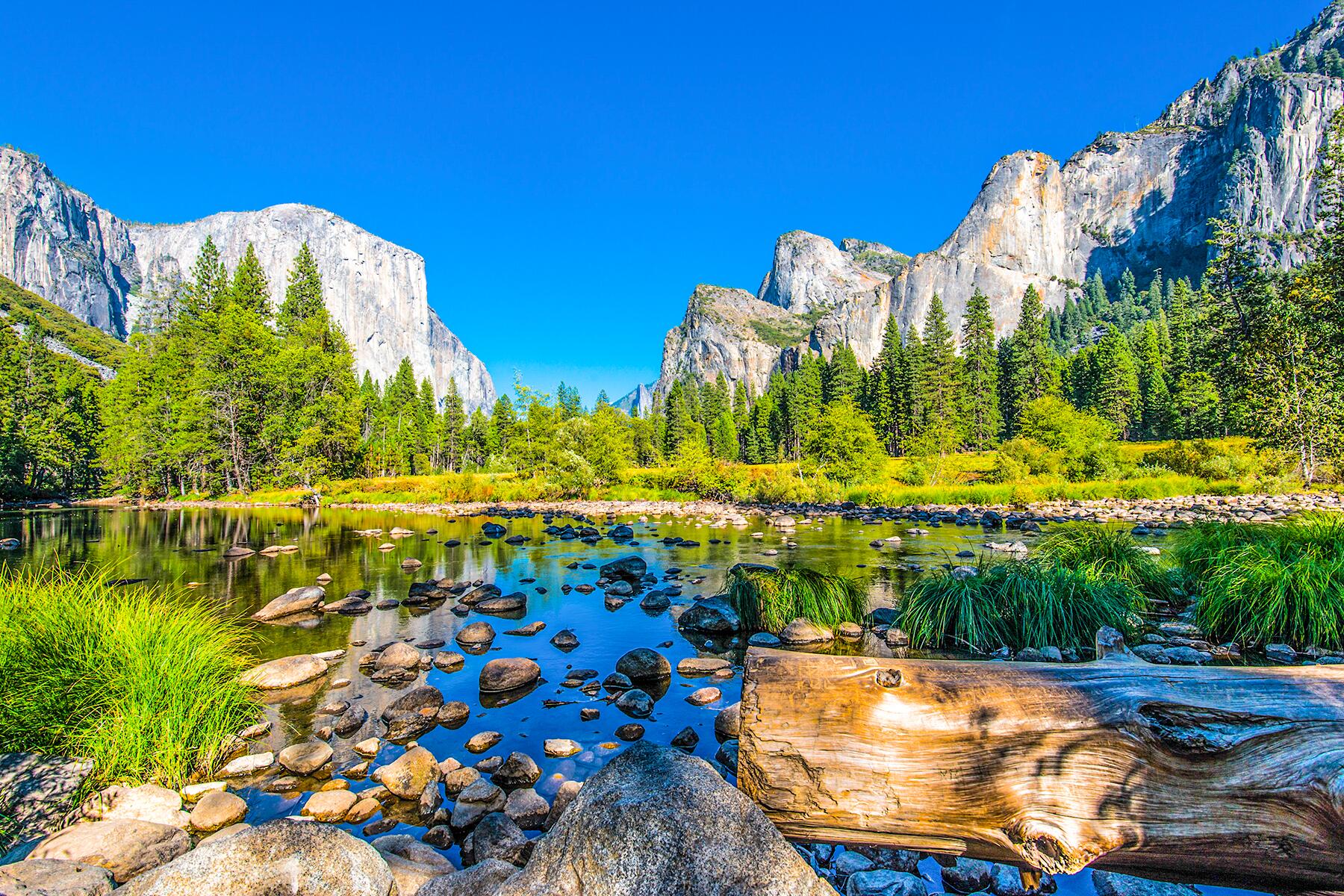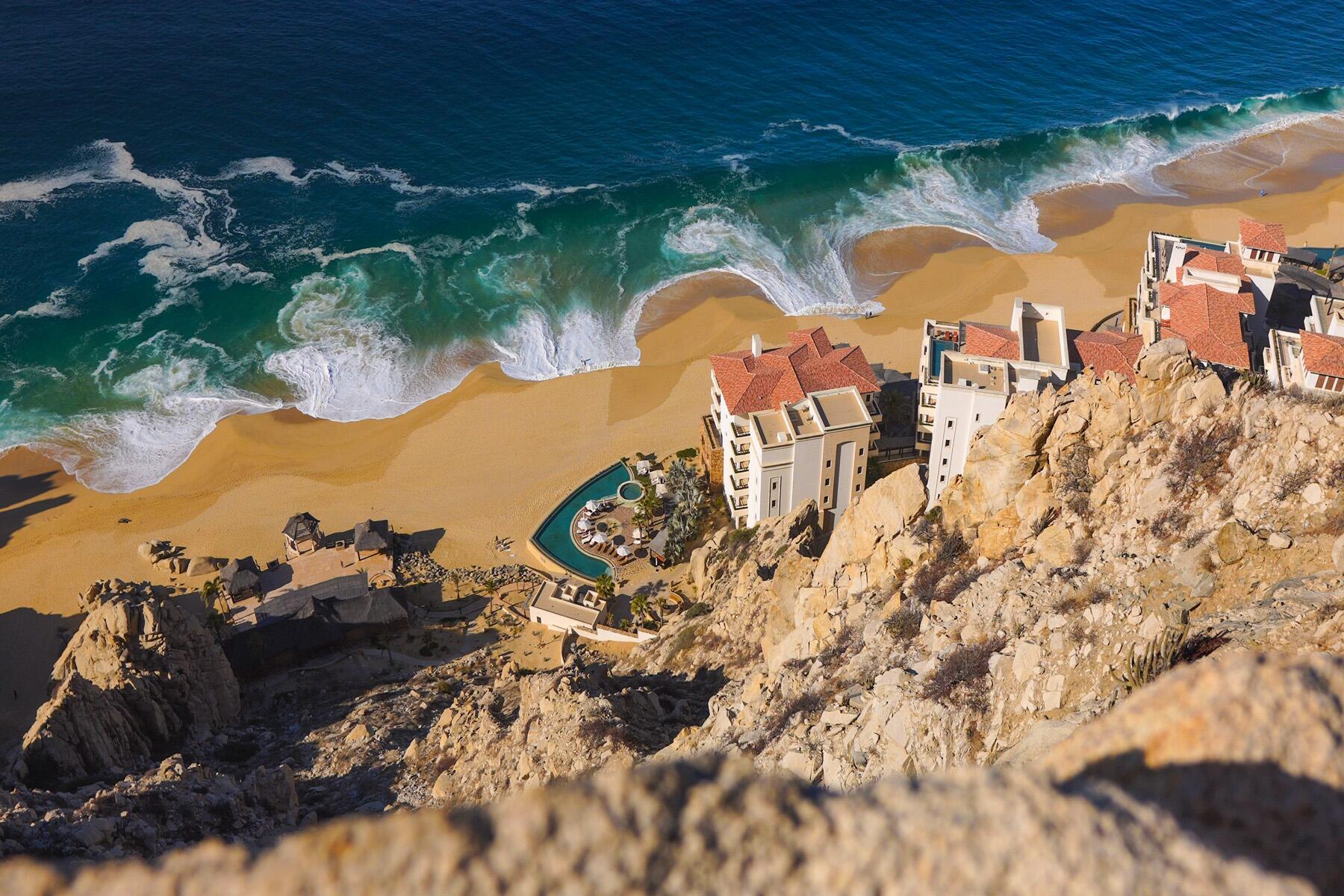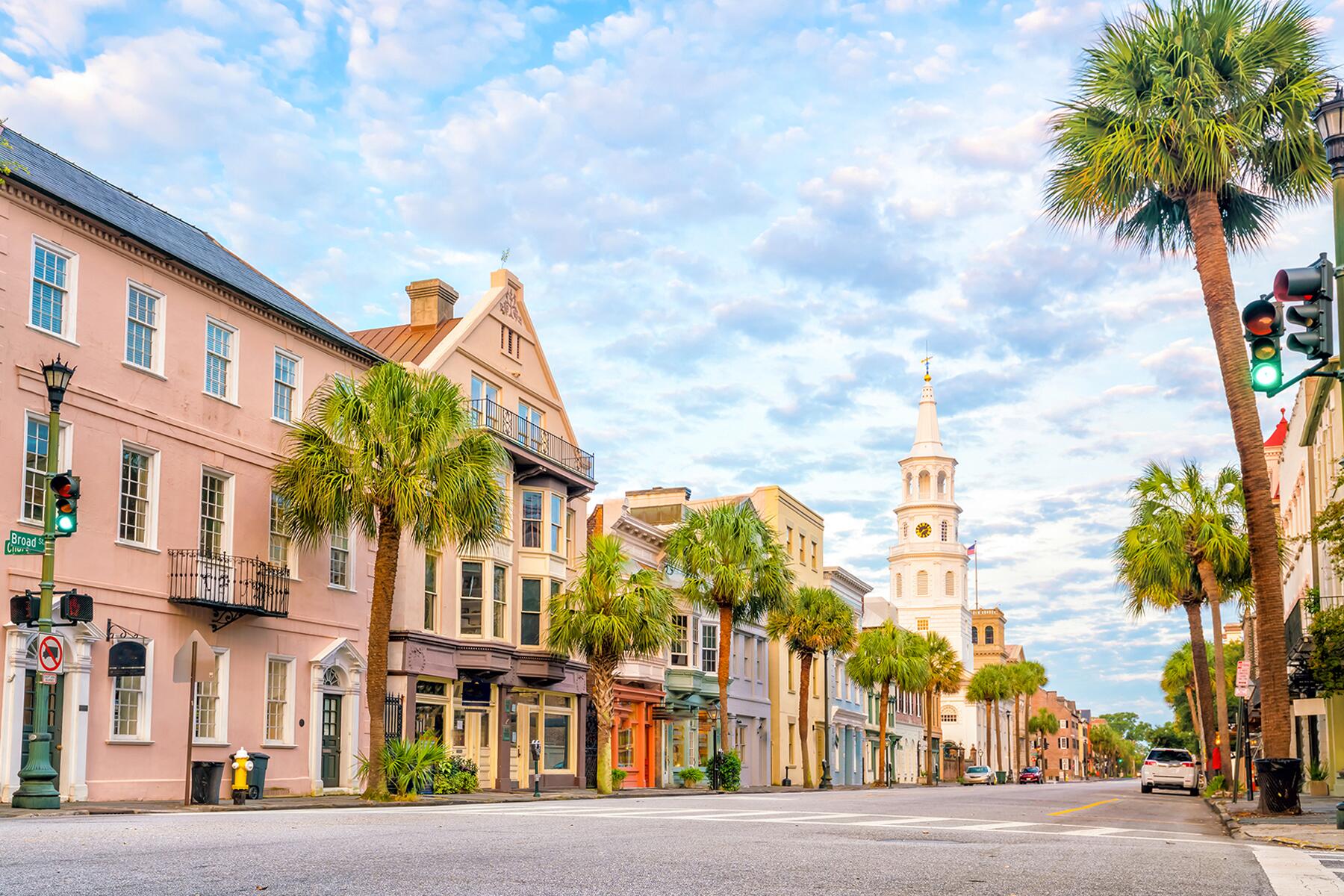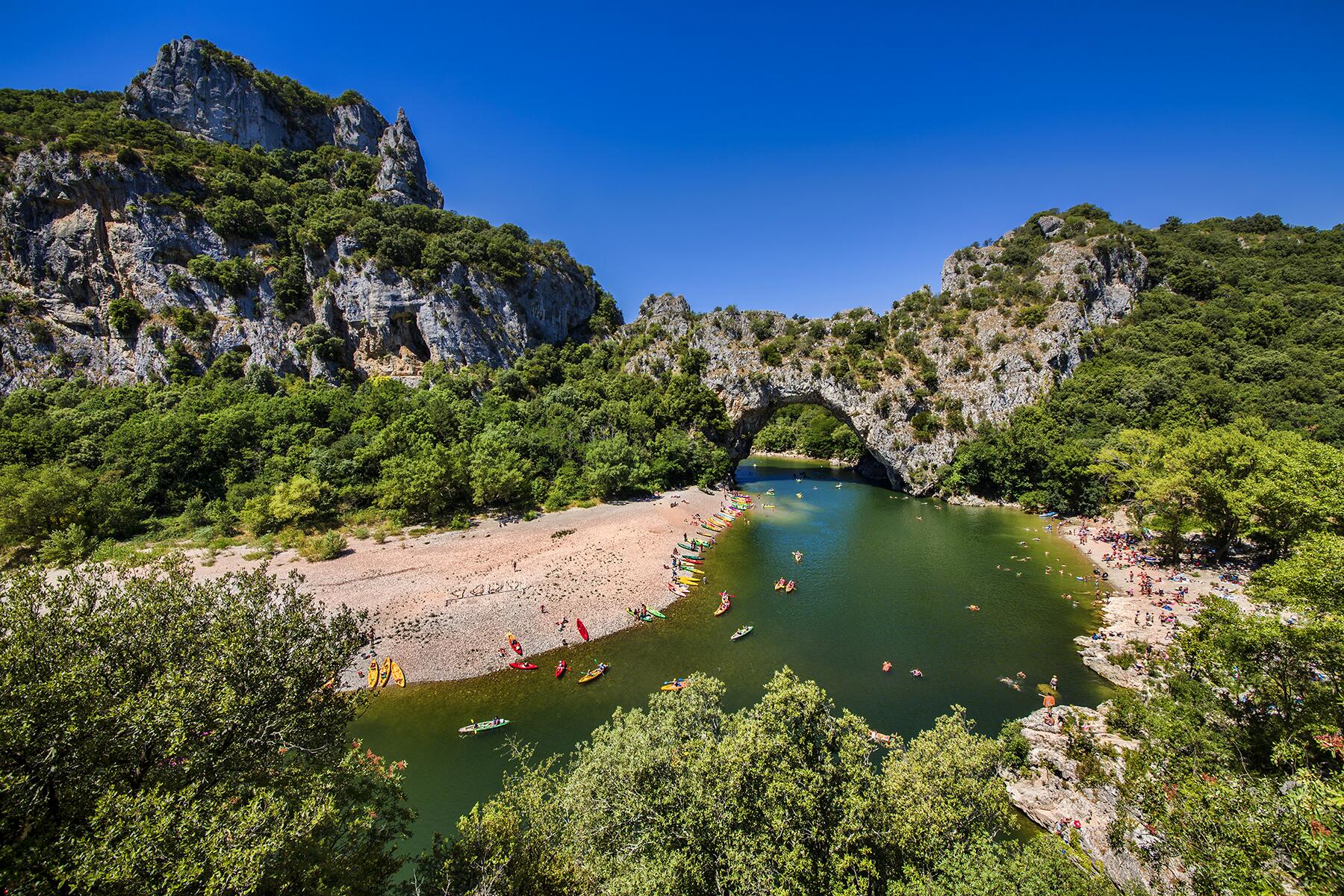Despite receiving more tourists than any other country on earth, how many of these natural wonders in France are you aware of?
Think of France and immediately you’ll probably conjure up images of elegant Parisian architecture, red wine, and needlessly complex (but amazing) gastronomy. Yet for a country with so much variety in its scenery, from palm tree-lined beaches to immense snow-capped mountains, France’s natural beauty gets far less attention than its culinary contributions. Here are 15 stunning natural wonders to consider visiting next time you’re in L’Hexagone.
Top Picks for You
Étretat Cliffs
WHERE: Normandy
Jutting out along the coast of Normandy from the small seaside town of Étretat, the white chalk cliffs are an iconic part of northern France that have long attracted painters and writers. Blanketed by a quilt of green grass and moss, the cliffs feature three natural arches and a pointed standalone rock known as L’Aiguille or “the Needle.”
Famously painted at sunset by Claude Monet in 1883, visit late in the day to get the most ethereal vision of this exceptional section of the French coast.
Camargue Salt Flats
WHERE: Occitanie
The distinct pink hue covering the salt lakes in Carmague is immediately recognizable and has an almost supernatural quality to it. Known locally as the Salin d’Aigues-Mortes, it’s one of the largest salt marshes in the Mediterranean and produces around 500,000 tons of salt each year.
The water gets its pink color from the presence of microscopic algae called Dunaliella Salina, often found in highly-concentrated saltwater. The unique landscape also features some interesting wildlife, including flamingos and the white, semi-wild Camargue horses.
Recommended Fodor’s Video
Dune du Pilat
WHERE: Nouvelle-Aquitaine
Europe’s tallest sand dune, the imposing Dune du Pilat is located on the eastern side of Arcachon Bay in the region of Nouvelle-Aquitaine. Reaching a height of 350 feet and stretching to over 1,500 feet wide, the enormous dune is a popular place come and relax in southwest France.
Surrounded by a dense forest of pine trees, the natural marvel is free to access and can be climbed all year round. With vistas of the Atlantic coast and the vast forest behind, the panoramic views from the summit are outstanding.
Mont Blanc
WHERE: Auvergne-Rhône-Alpes
Probably the most famous name on this list, Mont Blanc is the tallest mountain in western Europe and a French icon. Straddling the border between France and Italy along the Alps, Mont Blanc reaches a height of 15,782 feet and was first ascended in 1786 by Jacques Balmat and Dr. Michel-Gabriel Paccard.
Often following the popular Goûter Route, 20,000 climbers make their way to the ice-covered summit each year and are treated to a jaw-dropping alpine panorama.
Pont d’Arc
WHERE: Auvergne-Rhône-Alpes
Arching over the Ardèche River, the Pont d’Arc is a natural bridge located in the town of Vallon-Pont-d’Arc. The geological wonder is 112 feet high and almost 200 feet wide and is a popular spot in the summer for relaxing, swimming, and canoeing.
It also acts as an entrance to the remarkable Chauvet Cave, a UNESCO World Heritage Site and home to some of the world’s oldest cave paintings, dating back some 32,000 years.
Aiguilles de Bavella
WHERE: Corsica
Soaring up to 6,250 feet at its highest point, the serrated peaks of the Aiguilles de Bavella in South Corsica are beguiling and mesmerizing scene. Offering a range of walks and hikes, the “needles” are unique for their odd shapes and changing colors, depending on the time of day.
A rocky gray during the daytime, they take on a red hue in the evening as the sun sets, making for wonderful photo opportunities from any angle.
Côte de Granit Rose
WHERE: Brittany
Dissimilar to the rest of the region, the pink granite rocks of the Côte de Granit Rose can be found along the northern coast of Brittany. A superb area for walking, this windswept outcrop of the Atlantic was formed over thousands of years and carved by wind, waves, and ice.
Stretching between Bréhat and Ploumanac’h, the most spectacular section is probably found just north of Tréguier where the rocks have been eroded into some remarkable shapes.
Gorges du Verdon
WHERE: Provence-Alpes-Cote d’Azur
Proving that Provence is not all lavender fields and olive groves, the stunning Gorges du Verdon is a river canyon famous for its turquoise-colored water within a deep limestone valley. Fifteen-and-a-half miles long and 2,300 feet deep, it’s a popular location for rock climbing, fly fishing, canoeing, and paragliding.
With many hiking trails around the area, too, this natural wonder is a perfect escape for anyone wanting to leave behind the crowds of the Cote d’Azur.
Gouffre De Proumeyssac
WHERE: Nouvelle-Aquitaine
An immense cavern filled with stalactites and stalagmites, the Gouffre De Proumeyssac is also known as La Cathédrale de Cristal–The Crystal Cathedral. Located in the lush Aquitaine countryside, they were only discovered in 1907, and visitors were initially brought down into the cave in a basket lowered by a horse.
Things have changed since those days and in 1956, a tunnel was built that allows easy access which visitors still use to this day.
Lac D’Annecy
WHERE: Auvergne-Rhône-Alpes
One of Europe’s most picturesque lakes, Lac D’Annecy is also the third-largest lake in France. Known as “Europe’s cleanest lake” thanks to strict environmental regulations, the snow-capped mountains and scenic villages that surround it make it unsurprisingly popular with tourists and artists.
Don’t forget to visit the charming old town of Annecy while you’re there, famous for its postcard cobblestone streets and pastel-colored houses.
Canal du Midi
WHERE: Occitane
Stretching 150 miles from Toulouse to the Mediterranean, the Canal du Midi is a UNESCO World Heritage Site that twists through the sleepy Occitane countryside, bordered and sheltered by thousands of riverside trees. Hugely popular now with boating vacations, it accounts for one-fifth of all French river tourism.
The gorgeous south of France landscape means that the canal also passes through many wine-growing regions as well as fields of sunflowers and corn on its way to the sea.
Auvergne Volcanoes Regional Park
WHERE: Auvergne-Rhône-Alpes
France’s largest regional nature park, the Auvergne Volcanoes Regional Park covers 395,000 hectares and contains four volcanic massifs. A vast paradise for walkers and hikers of all experience levels, the park contains 80 volcanoes to explore.
At over 6,000 feet high, the Puy de Sancy is the tallest of these but if you don’t feel like walking then a cable car will whisk you up to the summit in just four minutes. And despite its small height, the Puy du Pariou is arguably more fascinating thanks to its distinct shape and the fact that you can descend into the center to explore its crater.
Quiberon Coast
WHERE: Brittany
Extending out five miles from the south Brittany coast, the wild shore of the Quiberon Peninsula is a bracing spectacle that’s been whipped by winds, waves, and spray for thousands of years. A coastal landscape of precipitous cliffs, secluded coves, and wild creeks, there is also an array of beautiful villages where you’ll find some wonderful seafood restaurants, boutiques, and art galleries.
Visit the Arch of Port Blanc at sunset to capture that iconic photo of the golden sun shining through the arch before it descends below the sea.
Rock of Solutré
WHERE: Bourgogne-Franche-Comté
A symbol of southern Burgundy, this unusual geological feature towers over the landscape and is a prehistoric site that’s been occupied by man for around 55,000 years. Visible for hundreds of miles, it’s over 1,500 feet high and has been designated a “Grand Site of France.”
The walk to the summit isn’t strenuous and the panorama is spectacular, with the city of Mâcon and the Alps visible on clear days.
Lavender Fields
WHERE: Provence-Alpes-Cote d’Azur
In full bloom by the end of June, Provence’s lavender fields are a perennial postcard favorite and their gaudy rows of vibrant violet can be seen around the region. The Valensole Plateau is particularly well-stocked for lavender fields as well as containing olive trees, almond trees, and truffles.
Only one hour north of Marseille, there’s little excuse not to come and see these stunning landscapes if you’re spending a summer in the south of France.




